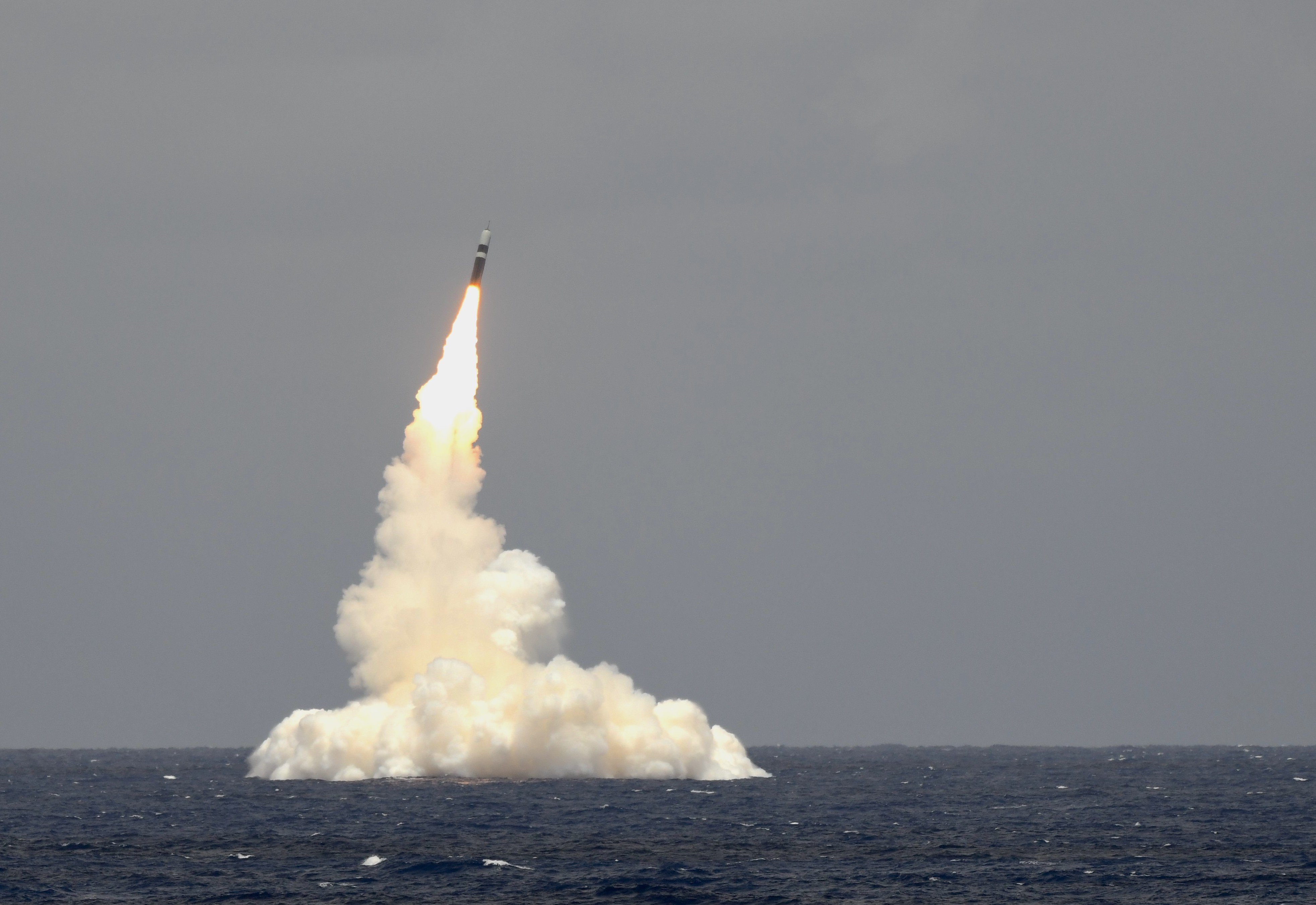
ARLINGTON, Va. – The Navy’s Strategic Systems Program this fiscal year will begin looking at what new technologies it will need to develop to sustain and modernize its nuclear weapons so they can operate on the Columbia-class ballistic missile submarines through the 2080s.
After the Trident D5 missiles underwent an original life extension effort (D5 LE), the office determined they would undergo a D5 LE2 effort that would insert new technologies where possible, find new ways to replace old parts that can no longer be manufactured, and otherwise keep the missiles reliable as a strategic deterrent for more than six more decades.
“We are starting this year – for the first time in our budget – we have a line in [Fiscal Year 2020], and the real crux to that is looking at all of those new technologies that we need to go think about on how we’re going to take what we have today, how we’re going to modernize it and how we’re going to get it to last the entire life of the Columbia, which is we all know about 2084,” SSP Director Vice Adm. Johnny Wolfe said last week at the Naval Submarine League’s annual symposium.
Wolfe said the original life extension effort has gone well, with five flight tests in the last year showing the missiles can still fly the tracks they’re supposed to. In fact, three motors involved in a test that were about three decades old performed like new during the test, he said.
However, this first life extension effort won’t get the missiles through the end of the Columbia SSBN’s life.
For example, Wolfe said, the Navy decided about six years ago to end production on the post-boost control system, and unique materials are used in that system. With industry knowledge now lost, the Navy needs to develop a new post boost control system with new materials, based on what industry can provide today.
“The way we did it then … we’re not going to be able to exactly do it in the future,” he said, and SSP needs to build in a learning ramp for industry as they reconstitute this capability.
With this second life extension effort, “the plan is, if you look at some of the critical technologies we’ve got today, and I’ll just talk about rocket motors: I would tell you, we’re the only people right now that use a 1.1 propellant and we have to do that because of volume constraints that we’ve got. There’s no need to change that, and as we talk about how we’re going to do this, we are going to continue on producing those rocket motors because, quite frankly, if you look from a reliability perspective, that is the biggest contributor and I would tell you there’s nothing better than what we’ve got in the submarine force today with those motors. So we’re not going to change that. We’re going to continue with that,” the vice admiral said.
“What we are going to start to do is start to look at what are those technologies – and I talked about post-boost control, things like nose fairings – things we know we won’t be able to produce anymore.”
The government is currently operating under a continuing resolution that does not allow new programs to start. The current CR expires next week and it remains to be seen what funding mechanism Congress will be able to pass, and therefore how it will affect SSP’s ability to get started on this early work on the Trident D5 LE2.
Additionally, Wolfe said SSP has been involved in modernizing the legacy Ohio-class SSBNs and using those modernization and upgrade efforts as risk-reduction measures for the Columbia class.
For example, the Ohio class used an Electrostatically-Supported Gyro Navigator (ESGN) as the inertial navigator for the Trident D5 missile. Wolfe said that, in his modernization portfolio, “the biggest program right now is making sure we get the next strategic navigator on the Ohio, which is a risk-mitigator for Columbia because, as we make this change from ESGNs to fiber optics, there’s’ a lot of learning we’ve got there.”
He added that several modernization efforts on shipboard systems such as the fire control system are taking place, and that their installation on the Ohio SSBNs will ease the fleet’s transition to Columbia as sailors on the new subs will already know how to operate and maintain these systems.
“It’s not just modernizing the triad; it’s making sure that we can sustain what we have today until we get to all those modernization programs,” he said of the importance of these Ohio upgrade efforts.





